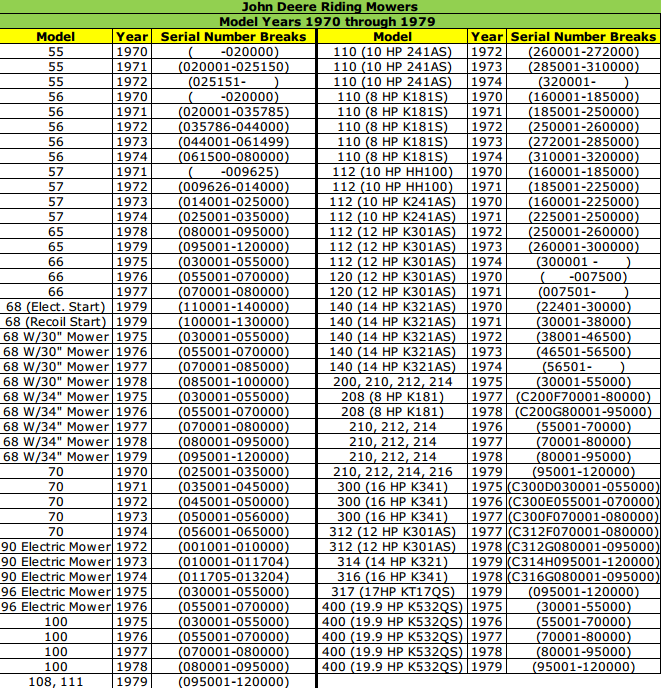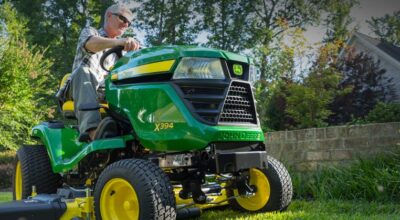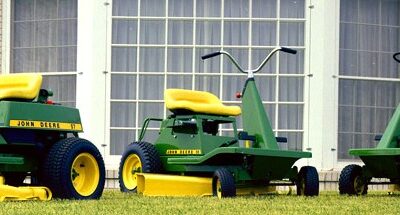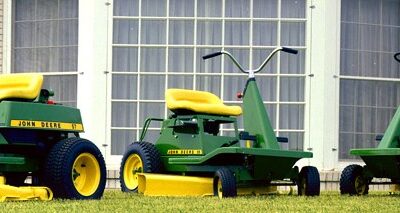Last week, we began our journey down memory lane, taking a deep dive into the formative years of John Deere riding mower history. We learned that Deere has been offering customers pieces of equipment that are suited for all sorts of lawn and garden activities for more than 50 years and even took a look at some notable models from the 1960s (the decade lawn and garden riding mowers were introduced by Deere).
Today, we will continue our trip back in time, looking at John Deere riding mowers of the 70s and what types of upgrades were made to offer even more value to customers. Sit back, relax, and cruise back to the 70s with us. Enjoy!
Taking a Deere-sized leap forward: While a number of existing models originally introduced in the 60s experienced some minor upgrades in the early 70s, the real advancements came in 1975, when Deere launched new a number of new series mowers. Unfortunately for the older models like the 110, 112, and the 140, Deere’s newest products quickly made their predecessors appear a bit antiquated. The 200, 300, and 400 series riding mowers each offered new features, building on the successes of some of their predecessors.
The John Deere 200 series: The 200 series marked the beginning of a brand new age for John Deere riding mowers. This series was comprised of some of the features from the John Deere 110 and 112, such as the V-belt Variator Drive and mechanical clutch PTO, but also provided some new additions. The new model design on the 200 series offered engine options between 8-16 horsepower, a rubber Iso-mounted, fully shrouded engine with a low tone muffler system, and a new style hood and grill. The design of the 200 series mowers took on the styling of full-sized Deere agriculture tractors with a back-sloped brow.
The John Deere 300 series: Much like the 200 series built up existing features of the 110 and 112 models, Deere made a similar move with its 300 series models. The 300 series was a hydrostatic model that was upgraded to a 16 horsepower Kohler K-series engine. The majority of the changes were visible from the outside of the machine thanks to a more square-shaped hood with integral headlights, engine side panels and a black instrument panel. The engine of the 300 series was moved from under the hood (next to the battery) to under rear fender pan.
The John Deere 400 series: As we have learned, Deere placed a large focus on the design of their equipment in the mid-70s, and the 400 series was one of their best examples of this. The wheelbase on the 400 was six inches longer than its 140 counterpart, with a track that was seven inches wider and a total weight measuring 250 extra pounds. If the sheer size and styling of the new 400 series wasn’t enough, this mower also boasted power steering, a cutting-edge technology for the time.
While we’ve highlighted most of the upgrades made to John Deere riding mowers in the 70s, here’s a complete chart which shows the mowers by model, year, and serial number.
As you hop on your mower this summer, don’t forget to remember the roots of your equipment. We hope you enjoyed your trip through the 70s John Deere-style. Be sure to come back next week as we continue along on our trip down memory lane with John Deere riding mower history.
If you enjoyed this post or want to read others, feel free to connect with us on Facebook!




